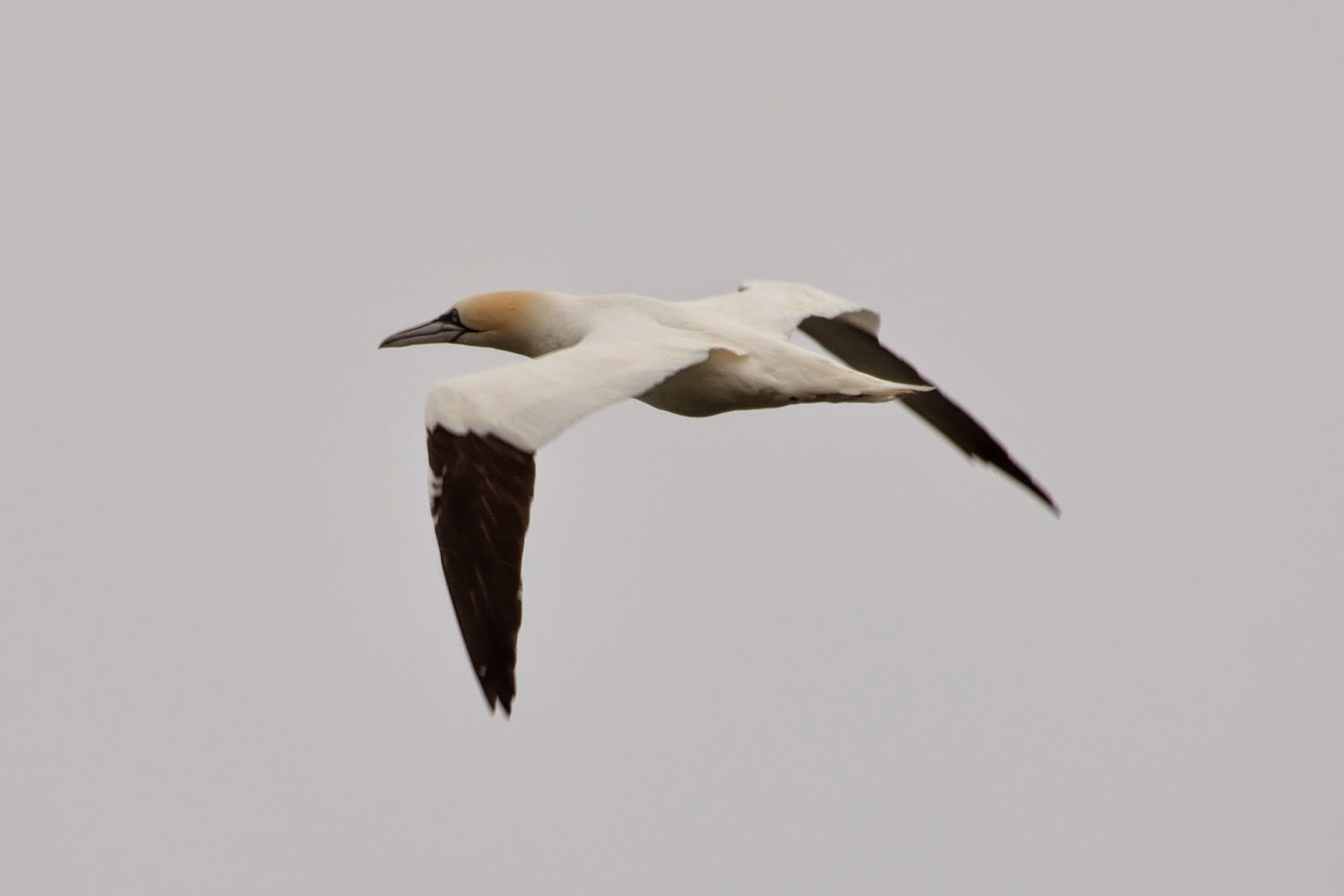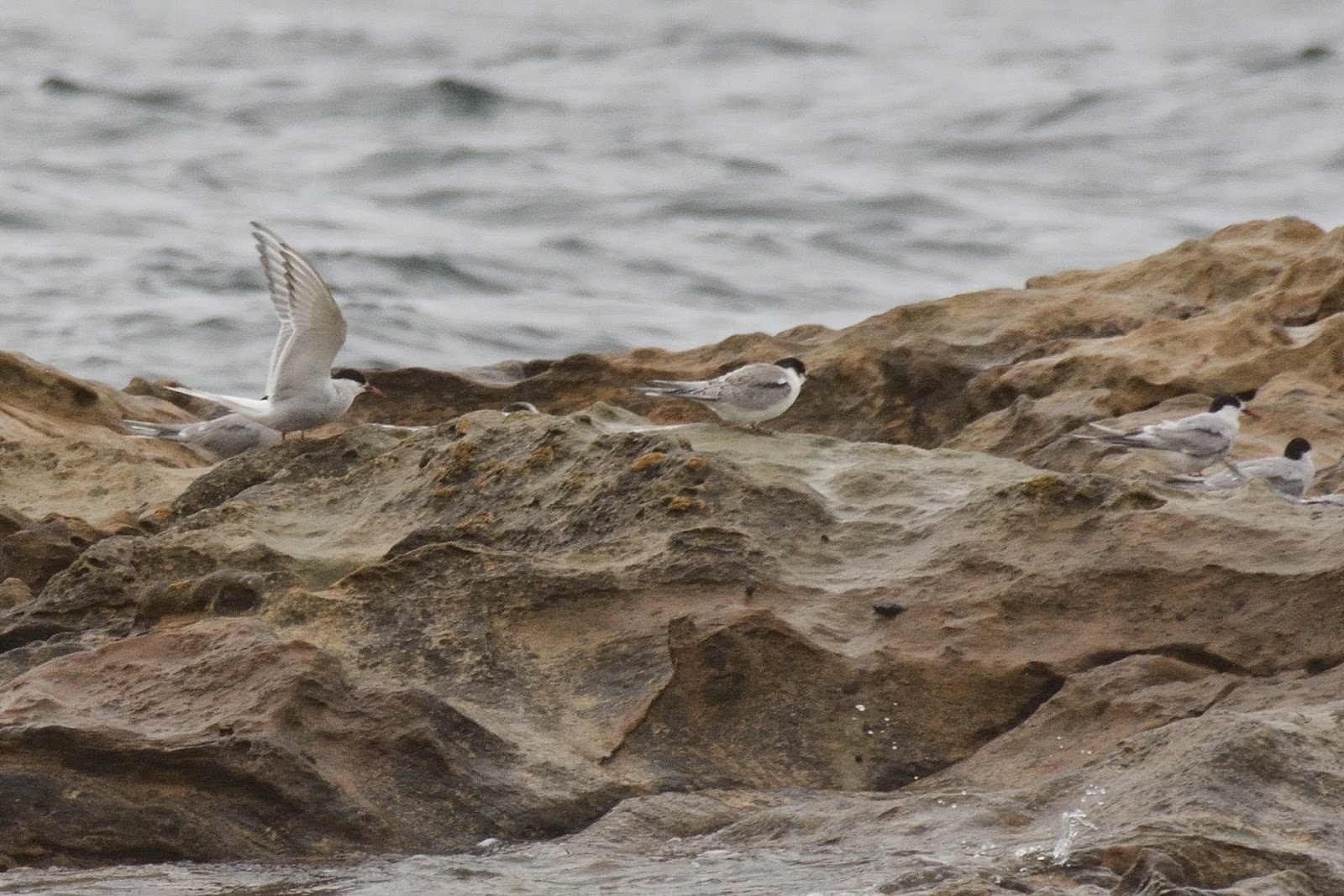 |
| Whimbrel |
 |
| Whimbrel |
 |
| Whimbrel |
 |
| Whimbrel |
 |
| Common Scoter |
 |
| Linnet |
 |
| Arctic Skua |
 |
| Grey Heron |
 |
| Teal |
 |
| Shag |
 |
| Gannet |
 |
| Common and Arctic Terns |
 |
| Terns |
For one reason or another outings with my pal, Steph Cowie, have been in short supply this year. So when the chance came up to get out for some birding together I wasn't going to pass it up. As we both enjoy photographing birds the conversation tends to be almost completely on the subjects of wildlife and photography (though work does intrude sometimes). It is always good to catch up anyway.
The plan was for a later start than normal owing to Steph having a social event the preceding evening, so I managed a bit longer in bed than usual for a Sunday. While waiting for Steph's text to say she was on her way I did a spot of birding from my living room window while assessing the weather to help decide on the best option. I managed 6 species in the space of around 15 minutes. Had it been earlier in the day, chances are the total would have been a bit higher as activity seems to be at its highest early on then tails off as the morning goes on. A few Herring Gulls glided around above the rooftops, with a few Swifts still about, slightly later than their usual departure date (it now appears that the birds stick around but desert the airspace around the nesting areas for a few weeks, being most noticeable in the evenings, though this is just my own theory based on noticing Swifts still around my home much later this year).
In addition to the Swifts and Herring Gulls, there were a few Woodpigeons flapping their way past to settle in high places. House Sparrows chirped from the eaves with a few birds flying down to bushes nearby and back again. The dark trailing edge to the underside of a gull's wings showed it to be a Lesser Black Backed Gull, confirmed when I caught sight of the topside as the bird gave a few lazy flaps of its wings. A couple of Starlings completed the short house list before Steph showed up just before 11am.
We decided to head for Fife Ness where the weather appeared a bit drier than the Angus area and much of Fife as well. Roadworks at Guardbridge meant a sizable detour but travelling by backroads sometimes throws up more bird sightings than going via the main roads. En route we encountered a rather heavy shower of rain to the south of Guardbridge. Before this we had seen Black Headed Gull as we came off the Tay road bridge and Swallows swooping low above the golden cereal fields. Before reaching Crail we had also added Carrion Crow, Blackbird and Collared Dove.
We arrived at Fife Ness around 1220 and as Steph got organised I scanned over the water to get a bit of advance warning on how busy or quiet things were on the bird front. Oystercatcher flew by with Gannets streaming northwards in ones and twos and larger parties. Shags shuttled to and from the rocks slightly further north. A Fulmar did a passable shearwater impression, wings held straight out as it swept upwards in an arc and down again to just above the waves. A single Guillemot dived below the waves not too far offshore.
We headed into the Fife Bird Club hide and got ourselves settled. Eiders bobbed around on the waves, their eclipse plumage making them look rather different to their normal 'clean' look. A party of Great Black Backed Gulls loitered like the threat they can be out on the rocks. A Common Sandpiper flew low past the rocks out front. They always seem out of place at the seashore. Herring Gulls and Common Terns flew by before Steph spotted three birds fly in but which landed out of sight. I watched the area where she indicated they had landed. They turned out to be Greenshanks but they did not linger, flying off low to the north after less than a minute. A few Kittiwakes and Sandwich Terns added to the Gannets headed north.
Our next visitors to the rocks turned out to be a pair of Whimbrel, one of which gave us good views before flying off and round in a wide circle in company with its partner before landing back again on the rocks. Again however they chose not to linger long and were soon travelling south once more. Although it wasn't the busiest passage of seabirds there was generally always something passing and Steph snapped away at the Gannets nearest to the hide. A young Common Gull flew by just above the rocks. Three Common Scoters sped north just feet above the grey water. Two Linnets dropped in briefly, perching on the top of the rocks.
It was Gannets and Gulls galore with a few Terns thrown in to the mix at times. Arctic Tern was added a little later. A dark bird caught my eye as it headed away from us. Skua! A few quick grabbed photos of variable quality showed it to be an Arctic Skua and not the hoped for rarer bird. Still, any skua species is always welcome (unless you are a seabird with a meal). A Grey Heron lumbered by northwards. I spotted a duck low over the water, quite far out. Photos showed it to be a Teal (a duck more often associated with freshwater sites but quite a realtively regular sight when I've been seawatching from Fife Ness. A Cormorant went by low above the waves. A text from Fife Bird Club reported Roseate Terns at nearby Kingsbarns and we debated whether or not to try for them. The weather didn't look overly promising with rain looking likely and the winds picking up in strength. We decided that as we were nearby, we might as well try for them.
A Magpie was on the Balcomie golf course and Woodpigeon was seen as we passed through Crail. Arriving at Kingsbarns beach a short while later we waited for the rain to abate slightly before venturing out to scan for Terns. Unfortunately the tide was further in than ideal, with only relatively low numbers of Terns perched out on rocks. These were Common, Arctic and Sandwich Terns but there was no sign of any obvious Roseate Terns. Having never seen one however, I kept looking and hoping. The rain began once more and it wasn't particularly easy to find shelter from the wind that also gave a decent view of the tern roost.
On the water were a group of young Eiders with a few Goosander further out and a Curlew was on the beach. Further out, Gannets passed by, though in far lower numbers than not too far down the coast at the Ness, suggesting that the birds headed out to sea rather than following the coastline. With the weather deteriorating further and no sign of the hoped for terns we decided to call it a day and headed back to the dry car spooking a Redshank and a Pied Wagtail on our wet and windy way.
Only 37 species seen but as always still a worthwhile alternative to sitting at home on facebook.
Species seen - Arctic Skua, Arctic Tern, Blackbird, Black Headed Gull, Carrion Crow, Collared Dove, Common Gull, Common Sandpiper, Common Tern, Cormorant, Curlew, Eider, Fulmar, Gannet, Goosander, Great Black Backed Gull, Greenshank, Grey Heron, Guillemot, Herring Gull, House Sparrow, Kittiwake, Lesser Black Backed Gull, Linnet, Magpie, Oystercatcher, Pied Wagtail, Redshank, Sandwich Tern, Shag, Starling, Swallow, Swift, Teal, Whimbrel, Woodpigeon.